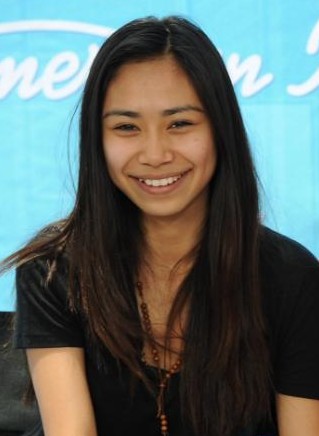After 9/11, Carlos Esguerra took the unpaved path to nature photography
By Cristina DC PastorCarlos Esguerra’s photographs are hypnotic.
His Flatiron Building has the gothic look a la Sleepy Hollow. His Manhattan skyline has the appearance of a stack of Lego blocks arranged according to color. The viewer is riveted, wondering how the photographer succeeds brilliantly in presenting his images differently.
If you ask Carlos, 77, there is no style or painstaking technique. Some of his best shots he had taken by chance, others by waiting for the right moment. The insight of an artist is often intriguing, but Carlos presents himself, his style, and his process as straightforward as he can. No pretension, no gimmick.
His favorite: A solitary yucca plant sticking out across a white sand desert in Santa Fe, New Mexico. He took a shot that captured the stalks’ lengthening shadow under the noonday sun. Above, the deep blue sky provided a bolt of color, giving the photo arresting vividness. Carlos was excited about it, confident he had a good photo in his hand. But his wife, Arlene, his chief critic, endearingly dismissed it as, “Ano ba iyan? Damo?”
Well, that “Damo” won second place at an international photo competition in Austria.
“Not just second place,” said Carlos with mild scoffing laugh when interviewed by The FilAm. “I was second place to Maggie Taylor.”
Taylor, he was quick to point out, is a noted surrealist photographer who became famous for her masterful use of Photoshop. Her husband, Jerry Uelsmann, is another surrealist artist who creates images using multiple traditional enlargers inside his darkroom.
“I met the two of them at the awards ceremony in Linz, Austria, in 2004,” said Carlos.
He does not remember exactly when he started chasing subjects with his Nikon F5 camera, but an old college yearbook served as a hazy reminder. His 1962 U.P. yearbook says: “Carlos…This guy can take pictures.”
“It must have been around 1959. I didn’t know even at that time I was already into photography,” he said.
In 1999, after working 30 years as a computer programmer, he picked up the camera again. He joined a photo expedition in New Mexico where he and his wife celebrated her birthday. He discovered the surrounding scenery and reveled in taking photos of beautiful national parks, such as Death Valley in California and Bryce Canyon in Utah noted for its rock formations called “hoodoos.”
Carlos and Arlene have two daughters, who embody their father’s twin passions. Camila, the scientist, is currently the head of the Chemical Neuroscience Research Group of the University of Oslo in Norway. The younger daughter, Ivilisse, the artist, was a member of the Children’s Orchestra Society for eight years as a violinist. Currently, she is a performing Eurythmy artist at Spring Valley, New York.
First exhibit
His first exhibit was in 2002. No white-wall gallery; just an Italian restaurant on W 17th Street owned by a Japanese.
“It was a very good reception. I exhibited 15 large photos, 20×30 inches,” he said. Someone left a cheeky compliment on the guest book that always elicits a chuckle from Carlos: “The Panna Cotta was bad but the photos were excellent.”
Carlos has been a regular at international competitions – such as the Austrian Hasselblad Circuit, the Trierenberg Fotoforum, the German Mega Circuit, and Prix dela Photographie Paris – and has been winning awards.
“I join primarily for validation. I want to see whether my photos are good enough,” he said. He has slowed down in the past couple of years, preferring instead to mount a once-a-year exhibit in NYC, usually at the Philippine Center on Fifth Avenue. “There’s so many good photographers, so difficult to win now.”
When his computer consulting company suffered a downturn because of the tragic events of 9/11, he decided to take early retirement to focus on his “re-discovered passion.” The Taytay-born Carlos — he has a business degree from UP Diliman and an MBA in Economics from George Washington University — has a long career as a computer programmer. One of his projects that may well be considered historic in the banking world was being part of a team in Chemical Bank that programmed the first ATM machine in New York.
“Nung araw you are limited to two uses a day and to $200 withdrawal. Your balance info was in the main office computer system and not connected to the ATM. We were the ones who programed that connection to the data base,” he recalled. Wikipedia states that on September 2, 1969, Chemical Bank installed the first ATM in the U.S. at its branch in Rockville Centre.
A series of remembrances make up Carlos’ fascinating life story: His first exhibit, the first photo he sold, his first international award. He will not forget when digital technology first came about.
“No more film,” he laughed. “Film is always a problem. I’ve gone into a lot of shouting matches with TSA guys at the airport because of their unreasonable requirements that would ruin my films.”
The switch to digital has paved the way for what Carlos depicted as the “Golden Age” of photography.
“During the film era, the camera body was just a box. The real important thing was the lens and the film. Now your film is the sensor of the camera, where the technology is. It allows the user continuous autofocus, have the correct exposure, and continuous tracking of the subject, all controlled by the sensor.
“Now, too, everyone is a photographer. It’s just fantastic,” he said.
© The FilAm 2018

Carlos’ most recent show on May 14 was a joint exhibit with fraternity brother Dr. Thor Lidasan. ‘Photography of Visible and Invisible Light’ was organized by Alpha Phi Beta’s East Coast Chapter, and held at the Philippine Center. In photo are Deputy Consul General Kerwin Tate (far left) and Consul Arman Talbo (4th from right). Photo courtesy of Arman Talbo















